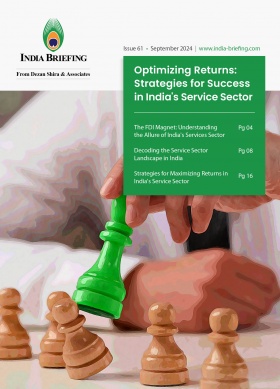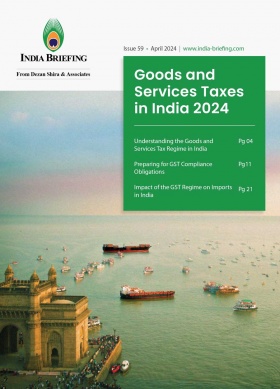India Shifts Gears: ‘PM E-DRIVE Scheme’ Replaces FAME to Accelerate EV Adoption
India is stepping away from its FAME (Faster Adoption and Manufacturing of Electric Vehicles) policy and approved the PM E-DRIVE Scheme on September 11, allocating INR 109 billion to accelerate the adoption of electric vehicles (EVs) in India.
India’s Ministry of Heavy Industries (MHI) has announced the ‘PM Electric Drive Revolution in Innovative Vehicle Enhancement (PM E-DRIVE) Scheme’ to accelerate adoption of electric mobility in the country.
Confirmed on September 11, 2024, the PM E-DRIVE Scheme provides INR 36.79 billion (US$438 million) in incentives to promote battery-powered two-wheelers, three-wheelers, ambulances, trucks, and other advanced EVs.
The total budget outlay of the PM E-DRIVE Scheme is INR 109 billion (US$1.29 billion) for a period of over two years. The scheme will focus on the production of two-wheeler and three-wheeler electric vehicles, along with public-transport vehicles.
The PM E-Drive Scheme replaces the earlier FAME (Faster Adoption and Manufacturing of Hybrid and Electric Vehicles) Scheme, which began in April 2015. FAME policy, which lasted nine years in two phases, supported 1,321,800 electric vehicles with subsidies totaling INR 115 billion (US$1.37 billion) before ending on March 31, 2024.
Key features of the scheme
The scheme offers subsidies and demand incentives worth INR 36.79 billion (US$438 million) to support electric two-wheelers, three-wheelers, ambulances, trucks, and upcoming EVs. According to the central government’s announcement, 2.47 million electric two-wheelers, 316,000 electric three-wheelers, and 14,028 electric buses will be covered under the plan.
Additionally, INR 43.91 billion (US$523.7 million) has been allocated for public transport and state transportation organizations to purchase 14,028 electric buses. The PM-eBus Sewa Payment Security Mechanism also provides INR 34.35 billion (US$409.6 million) to support the electric bus market. Furthermore, INR 5 billion (US$59.6 million) has been set aside for electric ambulances, and another INR 5 billion (US$59.6 million) for electric trucks.
The announcement also states that EV buyers will receive Aadhaar-verified e-vouchers to claim demand incentives, which will be submitted to the dealer and uploaded to the PM E-DRIVE scheme’s portal.
Who will benefit from the PM E-Drive Scheme?
India’s Information and Broadcasting Minister Ashwini Vaishnaw announced that 88,500 locations will receive full funding for EV charging infrastructure under the PM E-Drive scheme. He also mentioned that this funding complements existing Production-Linked Incentive (PLI) schemes for the automotive and auto parts industries.
The new PM E-DRIVE scheme reportedly aims to address the flaws of the previous FAME schemes, such as improper subsidy claims for imported vehicles. The latest scheme has also introduced INR 10,000 (US$119.25) subsidy for each electric 2-wheeler sold until March 2025 and INR 50,000 (US$596.24) for electric 3-wheelers, though these subsidies will be halved in the next financial year. For example, the 3-wheeler subsidy will drop to INR 25,000 (US$298.12) from April 2025.
The scheme targets a 10 percent market share for electric 2-wheelers and 15 percent for electric 3-wheelers by March 2026, according to Union Heavy Industries Minister HD Kumaraswamy.
No incentives for electric vehicle four-wheelers
The PM E-Drive Scheme excludes electric cars since they already benefit from a reduced 5 percent GST rate. The scheme will also not provide incentives for hybrid vehicles.
The FAME (Faster Adoption and Manufacturing of Hybrid and Electric Vehicles) policy was introduced in 2015 under the National Electric Mobility Mission Plan (NEMMP) to reduce vehicular emissions, decrease fuel consumption, and encourage sustainable transportation.
Key phases:
1. FAME I (2015-2019): Focused on providing incentives for the purchase of electric and hybrid vehicles and supported the development of charging infrastructure. It aimed to promote cleaner mobility in public and private sectors.
2. FAME II (2019-2024): Expanded the scope, providing INR 100 billion (US$1.19 billion) to encourage the adoption of electric vehicles, particularly in public transport (e-buses, 2-wheelers, and 3-wheelers). It also emphasized building a robust charging infrastructure and targeted reducing emissions from commercial fleets.
Conclusion
The PM E-DRIVE scheme was launched to rectify issues from the FAME phases, where companies improperly claimed subsidies meant for domestic EVs by selling mostly imported vehicles. While India has taken steps to recover these funds, the automobile companies that are yet to repay will be barred from the new scheme. Conformity of production (COP) tests will be conducted every six months to ensure compliance.
(US$1 = INR 83.84)
About Us
India Briefing is one of five regional publications under the Asia Briefing brand. It is supported by Dezan Shira & Associates, a pan-Asia, multi-disciplinary professional services firm that assists foreign investors throughout Asia, including through offices in Delhi, Mumbai, and Bengaluru in India. Dezan Shira & Associates also maintains offices or has alliance partners assisting foreign investors in China, Hong Kong SAR, Vietnam, Indonesia, Singapore, Malaysia, Mongolia, Dubai (UAE), Japan, South Korea, Nepal, The Philippines, Sri Lanka, Thailand, Italy, Germany, Bangladesh, Australia, United States, and United Kingdom and Ireland.
For a complimentary subscription to India Briefing’s content products, please click here. For support with establishing a business in India or for assistance in analyzing and entering markets, please contact the firm at india@dezshira.com or visit our website at www.dezshira.com.
- Previous Article India-Portugal: Bilateral Trade and Investment Profile
- Next Article Setting Standards for Manufacturing Excellence in India







